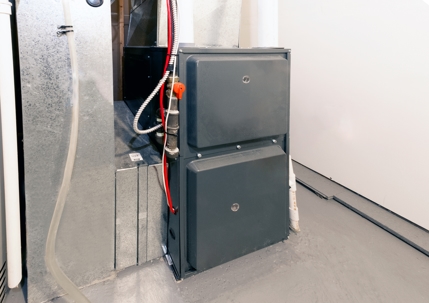Your furnace is an essential part of your home, keeping you nice and warm through the coldest months of the year. But what happens when your furnace stops blowing hot air? There could be many reasons for this, but the end result is an extra chilly winter. Find out why furnaces may stop working, how to fix them, and who to turn to for help.
Common Reasons Your Furnace Isn’t Blowing Hot Air
When your furnace is not blowing hot air, finding out why can be a major help in fixing it. Some typical culprits behind this issue are:
Thermostat Issues
Start by examining the thermostat. Your furnace might not heat properly if it's set incorrectly or is malfunctioning. Ensure it's on "heat" mode and the temperature is higher than the current room temperature. For battery-operated models, check if the batteries need replacing. A quick reset might also fix minor glitches. Regular checks and correct settings can help avoid unnecessary heating problems, as well as any number of other potential issues.
Clogged Air Filters
Clogged air filters are a frequent culprit when a furnace isn't blowing hot air. Dirty filters restrict airflow, forcing the furnace to work harder and less efficiently. This can lead to inadequate heating, which is why you should inspect and replace air filters every one to three months. Clean filters improve airflow and enhance indoor air quality, contributing to a comfortable and healthy home.
Pilot Light or Ignition Problems
If you have an older model of gas furnace, issues with the pilot light or ignition system can also stop your furnace from heating properly. The furnace can't heat the air if the pilot light is out or the ignition system isn't working. Check if the pilot light is lit and relight it if needed, following the manufacturer's instructions.
For electronic ignition systems, ensure they have power. If these steps don't resolve the issue, it's best to call a professional, as dealing with gas components can be risky.
Ductwork Obstructions
Obstructions or leaks in ductwork can disrupt hot air flow throughout your home. Debris build-up or damage to ducts can cause uneven heating or cold spots. Regularly check for visible damage or blockages and make sure all vents are open. A professional assessment may be needed to restore efficient heating if you suspect a ductwork issue.
Troubleshooting Tips to Try First
Before reaching out to professionals, try these troubleshooting steps to address furnace issues safely:
Check the Thermostat
Verify that the thermostat is set to "heat" and that the temperature is higher than the room's current temperature. If it's battery-operated, replace the batteries, and consult the manual for a reset procedure if needed.
Inspect and Replace Air Filters
Check air filters for dirt and debris. Replace them if clogged to improve airflow and heating efficiency.
Examine the Pilot Light
Ensure the pilot light is lit. If it's out, follow the manufacturer's instructions to relight it safely. Confirm that electronic ignition systems are functioning and receiving power.
When to Call a Professional
If troubleshooting doesn't resolve the issue, it might be time to call the experts. Persistent ignition problems, unusual noises, or frequent cycling on and off indicate that professional service is needed. Technicians can diagnose and fix complex issues, ensuring your furnace operates safely and efficiently.
Preventing Furnace Issues in the Future
Regular maintenance helps you avoid future furnace problems. Schedule annual inspections with a professional to catch potential issues early. Consider a programmable thermostat to maintain consistent temperatures and reduce furnace wear.
Fix Your Furnace to Enjoy a Warm Home
Addressing furnace issues promptly is the best way to keep your home warm and comfortable. Learning about these common problems and how to fix them can save you a lot of trouble and time if you have to call in the professionals. If you're experiencing furnace issues, contact Dailey Company for expert HVAC services today.

